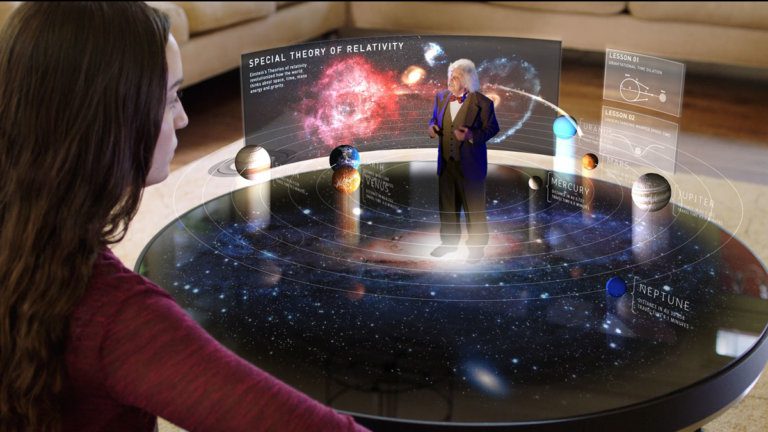Education
Enabling the Transformation of Education

Education, like every other part of life, is being fundamentally transformed by the ubiquity of connectivity and inexpensive computing and storage. Technology is enabling this transformation, but it is driven by the much broader trend in the economy — the transition of the workforce from a manufacturing economy to a knowledge economy.
On July 19-20, CableLabs hosted an Education Summit that brought together thought leaders from across the education sphere and the cable industry to explore the current challenges facing education as well as those of the future. The education system is beginning to see the transformative potential of technology — whether through "one-to-one" initiatives, integration of virtual reality, or gamification. Through the two-day event, three trends stood out in driving a fundamental transformation of education.
Fundamental Shift Toward Experiential and Problem-based Learning
Not surprising to anyone, the need to memorize facts has been largely replaced by Internet search, but unfortunately, the education system is still catching up. The skills for the jobs of today and tomorrow require problem solving, critical thinking, creativity, communication, and collaboration, all skills that are most readily developed through experiential and problem-based learning.
Experiential and problem-based learning can take many forms — "curriculum built on inquiry, project-based learning, internships, service-learning, and entrepreneurial innovation bring the relevance of academic content and simultaneously develop" the necessary skills for the workforce of tomorrow. The current emphasis to more broadly include the development of computer programming skills melds well with a project-based focus, whether developing apps, games, or websites, applying computer science to solve a real world problem is the key. Project-based learning is not limited to the digital world. Makerspaces enable students to create and solve physical world problems using the latest in prototyping and machining technology — 3D printers, CNCs, laser cutters, etc. The key is enabling students to meaningfully contribute to addressing real world problems in their communities.
One amazing example of community-relevant, problem-based learning is the Global Earthquake Forecasting System, which teamed NASA researchers with Alaska high school students in Ketchikan, Kodiak and Old Harbor — where earthquakes and tsunamis pose a significant risk. "Using new cutting edge sensing instruments, the students collect and analyze data used to detect early signals that occur prior to an actual earthquake event. Their findings are then reported to NASA project managers." For their earthquake forecasting work, the Kodiak high school team was awarded first place in 2015 NASA World Wind Europa Challenge, “an annual university-level competition that provides an opportunity for the world's 'best and brightest' to deliver sustainable solutions that serve local, regional, national or international interests.” Not only were they the first ever submission from a high-school team, but they won.
Disruption of Institutions and Curriculum Creation
Learning is no longer limited to the classroom and technology is enabling a fundamental shift of the role of the teacher – from that of "lecturer" to that of "coach." This new paradigm takes many forms and is often referred to as personalized learning, blended learning, or flipped classroom and all have a similar theme of turning the traditional education model inside out and putting the student at the center of an individualized experience.
This new paradigm allows variation, innovation, and “student input into (and even control of) the time, pace, path, and place of learning.” Only with advances in technology and widespread access to connectivity will this new paradigm be able to be implemented effectively, affordably, and equitably.
Ubiquitous connectivity, devices, and inexpensive computing and storage along with low-cost and easy to use tools are also enabling a decentralized approach to curriculum and content creation. Teachers are now able to easily create their own curriculum and content — free from the confines of the traditional text book. The tools for creating and integrating media rich content are readily available. Moreover, platforms, like “Teachers Pay Teachers” enable a market for teachers to exchange the lesson plans and other content they create with other teachers.
Transformative Experience - Immersive and Interactive Virtual Agents
Artificial intelligence (AI) and virtual agents also promise to transform the education experience, just as they will transform entertainment and work. AI and virtual agents will create a platform to preserve and provide history in an engaging format, never before possible. One example is the natural language AI created based on the holocaust survivor Pinchas Gutter. His story will now live on forever through an interactive hologram that can respond to questions about the holocaust and ensure this part of history is never lost.
The promise of AI goes well beyond just preserving history. It will facilitate an individualized and customized interactive experience that has the potential of providing just the right engagement at just the right time to ensure students can successfully achieve the desired education outcome – true personalized learning. AI will not only be able to react to the words we use, but will also be able to read and react to our emotions to facilitate a more comfortable and conducive environment for learning. Using facial and other non-verbal data, the virtual agent will be able to detect fear, frustration, and confusion, among other emotions, to better guide the student’s experience.
All of these trends will drive the network and service requirements necessary to serve the education market of tomorrow – a more decentralized, collaborative, and interactive environment. CableLabs and the cable industry continue to work to develop the technologies required to support a transforming education system — whether that is through increasing network capacity, improving performance, or enhancing network security, to name just a few of our efforts.



